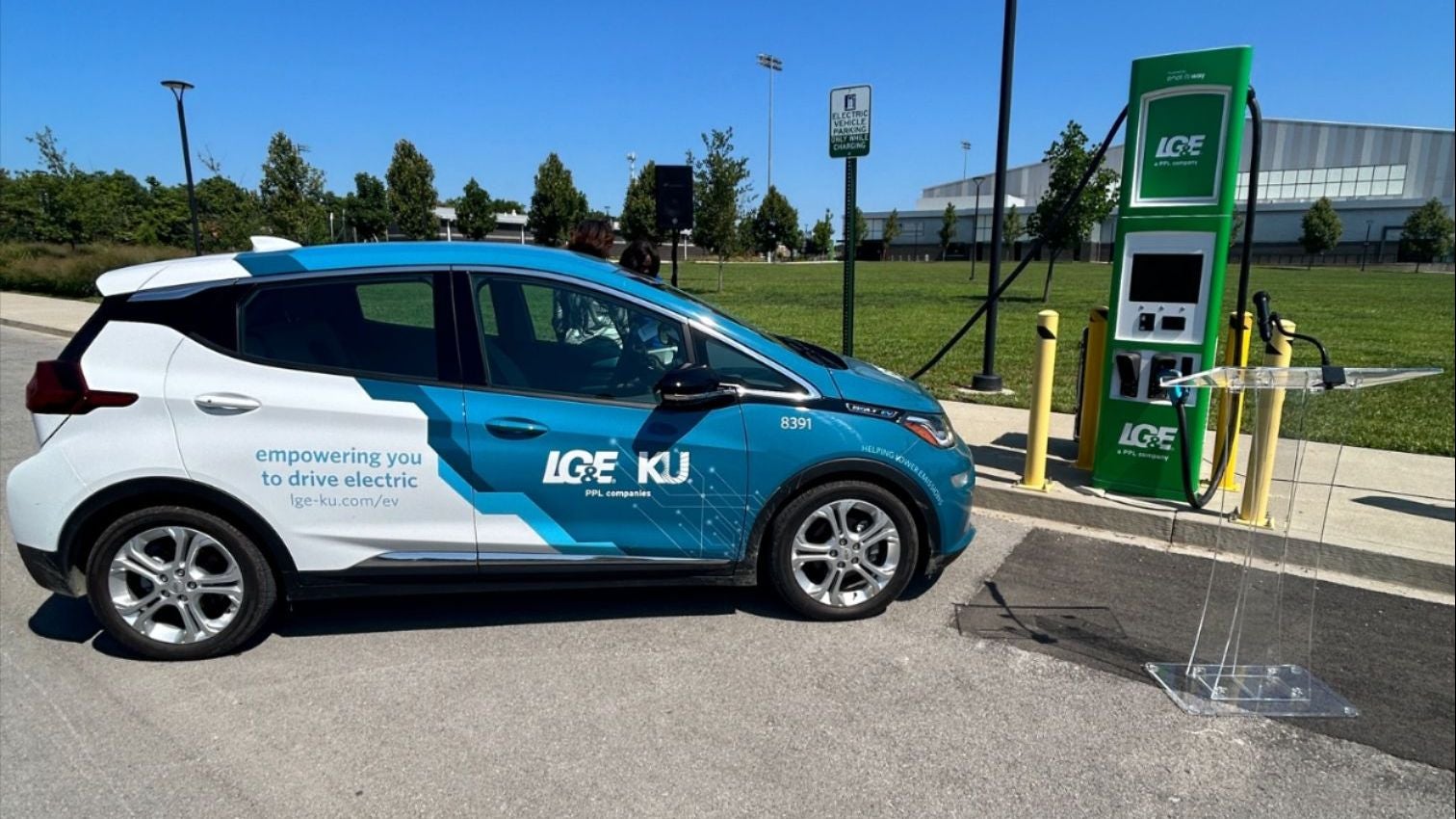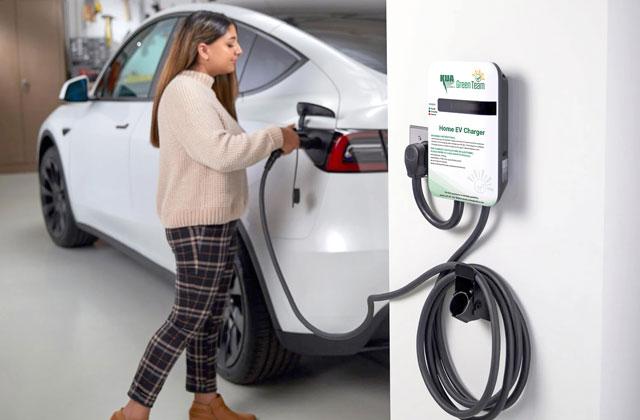New Developments in EV Charging: Exactly How the Sector Is Developing to Fulfill Need
As the electrical automobile (EV) market remains to broaden, the charging facilities is undertaking substantial transformations to address the surging demand. Key developments in ultra-fast billing technologies, coupled with smart grid integration, are improving the landscape. Technologies in battery technology promise enhanced performance and sustainability. Nonetheless, the search of worldwide billing requirements continues to be a crucial variable in allowing smooth customer experiences and extensive adoption. The ramifications of these advancements elevate essential inquiries regarding the future of EV charging and its role in the wider energy environment.
Development of Billing Facilities
The fast expansion of electric lorry (EV) charging infrastructure is an important component in promoting the extensive fostering of electrical mobility. As federal governments, private business, and customers significantly recognize the significance of minimizing carbon exhausts, financial investments accountable networks have actually risen. This facilities growth is vital to ease range stress and anxiety, making sure that EV individuals have hassle-free accessibility to billing terminals.
Substantial developments accountable terminal modern technology and deployment approaches have actually emerged. Urban locations are seeing a spreading of public billing stations, while rural regions are gradually being incorporated right into the charging network. Collaborations between automotive manufacturers and billing service providers are coming to be much more common, helping with the establishment of extensive networks that enhance individual experience and accessibility.
On top of that, the assimilation of renewable resource resources into billing terminals is getting momentum, advertising sustainability in the EV community. This transition not just supports ecological goals but additionally aligns with the climbing demand for green power options among consumers.
Ultra-Fast Charging Technologies
Ultra-fast billing technologies represent a significant jump forward in the EV charging landscape, enabling electrical cars to charge in a portion of the time contrasted to standard billing techniques. These innovations usually supply power levels exceeding 150 kW, with some systems getting to up to 350 kW or even more, significantly decreasing charging times to as low as 15-30 mins for a significant fee.
Key allowing modern technologies include improvements in battery chemistry, power electronic devices, and thermal monitoring systems. High-capacity batteries with improved thermal stability enable for faster charging without overheating. EV Charging news. In addition, growths accountable infrastructure, such as liquid-cooled cable televisions and modular billing stations, assist in efficient power transfer, improving the overall customer experience
Significant automotive suppliers and innovation firms are actively buying ultra-fast charging networks, identifying the essential role they play in getting rid of array anxiousness and increasing the adoption of electric automobiles. As these modern technologies become a lot more widely offered, the EV market is anticipated to witness substantial development, making electric mobility a more eye-catching option for consumers. In general, ultra-fast charging technologies are critical fit the future of sustainable transportation, leading the way for a more effective and substantial charging ecological community.
Smart Grid Integration

Through need reaction approaches, clever grid systems can adjust charging routines based on grid conditions and electrical energy rates. During durations of high demand, billing can be postponed to off-peak hours, resulting in lower costs for consumers and reduced strain on the grid. In addition, vehicle-to-grid (V2G) innovations allow EVs to discharge energy back into the grid, supplying secondary solutions and improving grid stability.
Assimilation with renewable resource resources even more boosts the sustainability of EV charging. By aligning billing activities with periods of high solar or wind generation, smart grids promote a greener billing facilities. Eventually, wise grid integration not just sustains the growing demand for EVs yet likewise adds to a much more durable and lasting energy future, placing Visit This Link the market for long-term success.
Battery Innovations
Among the fast development of electrical lorries (EVs), battery innovations stand at the forefront, driving innovations in sustainability, efficiency, and efficiency. As the demand for EVs surges, makers and scientists are concentrating on improving battery technologies to resolve difficulties such as array anxiousness and charging times.
Lithium-ion batteries stay the most extensively used modern technology, yet brand-new materials and chemistries are arising to enhance power thickness and long life. Solid-state batteries, for example, promise higher power storage capability and improved safety by replacing liquid electrolytes with strong ones. This change can significantly minimize the risk of fire and enhance the life-span of batteries.
In addition, developments in battery reusing processes are vital for sustainability. Business are establishing techniques to recuperate beneficial materials like lithium, cobalt, and nickel from made more helpful hints use of batteries, advertising a circular economic situation and minimizing environmental effect.

Global Billing Criteria

Efforts are underway to develop global billing requirements that facilitate compatibility among different EV designs and charging stations. Organizations such as the International Electrotechnical Compensation (IEC) and the Society of Automotive Engineers (SAE) are working collaboratively with automobile producers and power providers to develop comprehensive standards. EV Charging news. These criteria objective to enhance the charging procedure, reduce the need for numerous adapters, and improve individual experience
Furthermore, standardization can substantially boost the expansion of the billing network, as it urges investment by making infrastructure development much more foreseeable and reliable. As the EV market matures, a unified method to charging requirements will certainly be vital for ensuring that consumers can charge their cars easily and dependably, consequently sustaining the broader shift to sustainable transportation.
Final Thought
The electrical automobile charging sector is going through substantial change to deal with the surging demand for sustainable transportation. Innovations in billing facilities, ultra-fast modern technologies, wise grid combination, and innovative battery services are critical in boosting user experience and operational effectiveness. The search of global charging requirements is essential for making certain interoperability throughout various regions and systems. Jointly, these developments place the market to sustain a more comprehensive adoption of electrical automobiles, inevitably contributing to an extra sustainable future.
Urban areas are seeing a spreading of public charging terminals, while rural regions are gradually being incorporated into the billing network. Additionally, developments in billing framework, such as liquid-cooled cords and modular charging terminals, assist in efficient power transfer, improving the overall individual experience.
In general, ultra-fast charging innovations are essential in shaping the future of sustainable transportation, paving the means for a more substantial and effective charging community. - EV Charging news
By lining up billing tasks with periods of high solar or wind generation, wise grids advertise a greener charging framework.Initiatives are underway to develop global charging standards that promote compatibility among numerous EV designs and billing stations.